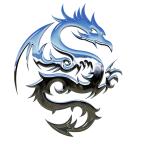screenshot-2021.01.21-03_45_44.jpg
Star Trek may be a cultural touchstone, but every iteration of the final frontier has eventually met its end. Beginning in 1966, Star Trek has been a science fiction institution for the majority of its existence. The franchise's overall popularity has ebbed and flowed over the decades, but rarely has there been a time where a Star Trek film or TV series wasn't at least in some stage of development.
While the cancellation of Star Trek: The Original Series - and its eventual revival as a film series - is a key part of the franchise's mythos, the circumstances around the endings of some of the latter day Star Trek series are less well known. Some of the more popular series got to wind down on their own terms, while a handful of others were cut down before their time, the victims of low ratings or fan ambivalence.
In many ways, the health of the overall franchise can be gauged by the circumstances under which each series ended. The franchise was perhaps at the height of its popularity in the 1990s, which featured three series that all ended of their own accord, while the 21st century has been less kind. Here's why each series ended, and what it meant for Star Trek as a whole.
Star Trek: The Original Series
screenshot-2021.01.21-03_48_46.jpg
Star Trek: The Original Series is of course where it all began. After NBC rejected Gene Roddenberry's Star Trek initial pilot for being too dull, Jeffrey Hunter declined to return as Captain Christopher Pike and was replaced with William Shatner's swashbuckling James T. Kirk, and the show's dynamics almost instantly snapped into place. Kirk and Spock - played with subtle charm by the late, great Leonard Nimoy - became cultural icons, and a fandom was born.
TOS, however, was never a ratings behemoth. It faced the specter of cancellation after season 2, but an unprecedented letter writing campaign from fans helped NBC see the potential in the little sci-fi series. But due to network politics and a burned out Gene Roddenberry, season 3 ended up in a horrific time slot and suffered a creative slump, resulting in its premature end. That was not the end of the story, of course. The show would go on to be an unexpected monster hit in syndication throughout the 1970s, and was eventually revived with the 1979 big screen adventure Star Trek: The Motion Picture, and the franchise never looked back.
Star Trek: The Animated Series
screenshot-2021.01.21-03_51_16.jpg
Sometimes forgotten or dismissed even among Star Trek fans, Star Trek: The Animated Series featured the first new Star Trek adventures on fans' televisions four years after TOS's demise. With the exception of Walter Koenig, the entire cast from TOS returned to voice their respective characters, and the show was so well received it won an Emmy for Outstanding Children's Series. The series consisted of 22 episodes split over two seasons. In that era animated shows - even high profile ones like Star Trek: The Animated Series - were only designed to run for a finite amount of time, so it wasn't exactly cancelled, it just fulfilled its intended run.
Star Trek: The Next Generation
screenshot-2021.01.21-03_53_03.jpg
The franchise's first great leap forward, Star Trek: The Next Generation featured a new crew and new Enterprise, set about a century after the adventures of Kirk and Spock. The show aired in first run syndication, meaning it didn't have to abide by notes and direction from any single television network, like TOS had with NBC. The result was one of the most popular and financially successful shows of its era. It ran for seven seasons, with a huge, consistent viewership that went far beyond hardcore Trekkies.
TNG's much celebrated series finale, "All Good Things," was watched by over 17 million people, putting it on par with contemporary network hits like Seinfeld and Home Improvement. As might be evident by that number, the show could have easily kept going, and an eighth season was original planned, though ultimately scrapped in favor of making TNG movies, a decidedly questionable decision in retrospect.
Star Trek: Deep Space Nine
screenshot-2021.01.21-03_57_29.jpg
Star Trek: Deep Space Nine was a darker, more morally complex take on Star Trek than virtually anything that had come before. It dealt with religious themes, the costs of war, and some decidedly imperfect characters, none more so than Captain Benjamin Sisko, perhaps still the most complex lead character in Star Trek's history.
It was also Star Trek's first foray into serialized storytelling, which worked against it in first run syndication; in the era before streaming and DVRs, if you missed an episode, you had no idea what was happening. This resulted in the show having something of a ratings ceiling, never approaching the popularity of TNG during its initial run; DS9 even added Worf from TNG in season 4 in an attempt to boost viewership. The show ended on its own terms with season 7 and was only considered a modest success in its day, though it's only grown in acclaim over the years as one of the first shows to utilize what audiences now think of as modern storytelling devices.
Torrent Invites! Buy, Trade, Sell Or Find Free Invites, For EVERY Private Tracker! HDBits.org, BTN, PTP, MTV, Empornium, Orpheus, Bibliotik, RED, IPT, TL, PHD etc!
Results 1 to 2 of 2
Thread: Why Every Star Trek Series Ended
Threaded View
-
01-21-2021 #1Super Moderator





















- Reputation Points
- 915622
- Reputation Power
- 100
- Join Date
- Dec 2016
- Posts
- 22,758
- Time Online
- 509 d 4 h 24 m
- Avg. Time Online
- 3 h 58 m
- Mentioned
- 2782 Post(s)
- Quoted
- 806 Post(s)
- Liked
- 16937 times
- Feedbacks
- 381 (100%)
Why Every Star Trek Series Ended
WHAT WE DO IN LIFE ECHOES IN ETERNITY


 LinkBack URL
LinkBack URL About LinkBacks
About LinkBacks





 Reply With Quote
Reply With Quote





